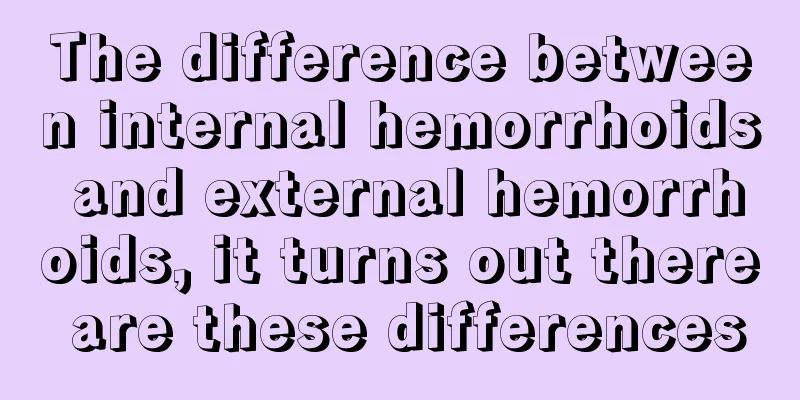Where is the thyroid gland?

|
The structure of the human body is very complex, including the internal organs, blood vessels, and thyroid gland. The thyroid gland is an important organ of internal secretion. The thyroid gland is generally located in the front of the neck. If the thyroid gland has a disease, it will easily lead to some physical diseases and affect the health of the body. In daily life, you need to pay more attention to rest and work and rest rules, and pay attention to the combination of meat and vegetables in your diet. Where is the thyroid gland? The thyroid gland is an important endocrine and metabolic organ in the body, located in the front of the neck. Morphological characteristics Normally most people do not know where the thyroid gland is located, but most people are familiar with "thick neck disease". In fact, "thick neck disease" is an enlarged thyroid gland, which tells us that the thyroid gland is located in the neck. To be more specific, we can feel what we usually call the "Adam's apple" ourselves. The thyroid gland is located about 2 to 3 centimeters below the "Adam's apple" and can move up and down with it when we swallow. The thyroid gland is shaped like an "H", brown-red in color, and consists of two lobes, left and right, connected by an isthmus in the middle. The two side lobes are attached to the outer sides of the lower larynx and the upper trachea, reaching the middle part of the thyroid cartilage and the sixth tracheal cartilage. The isthmus is mostly located in front of the second to fourth tracheal cartilages and is underdeveloped in some people. Sometimes a cone-shaped lobe extends upward from the isthmus. It varies in length, with the longer one reaching the hyoid bone. It is a relic of embryonic development and often gradually degenerates with age, so it is more common in children than in adults. The thyroid gland is covered with a fibrous capsule, called the thyroid capsule. This capsule extends into the glandular tissue and divides the gland into lobules of varying sizes. The capsule is covered with the deep cervical fascia (pretracheal layer). There is often ligament-like connective tissue connecting the lateral lobes of the thyroid gland and the cricoid cartilage. Therefore, when swallowing, the thyroid gland can move up and down with swallowing. Anatomy Internal structure The thyroid gland is the largest endocrine gland in the human body. It is brown-red in color, divided into left and right lobes, connected in the middle (called the isthmus), in an "H" shape, and weighs about 20 to 30 grams. The thyroid gland is located in the front part of the trachea below the larynx and can move up and down with the larynx when swallowing. The basic building block of the thyroid gland is the acinus, which has a strong iodine aggregation effect. Although the iodine content in the gland is usually 25 to 50 times higher than that in the blood, one-third of the iodine intake from the daily diet still enters the thyroid gland, and 90% of the body's iodine content is concentrated in the thyroid gland. Thyroid hormones are hormones secreted by the thyroid gland. The main physiological functions of thyroid hormones are: (1) Promote metabolism, increase oxygen consumption of most tissues, and increase heat production. (2) Promotes growth and development. It is essential for the development and growth of long bones, brain and reproductive organs, especially in infancy. Lack of thyroid hormone at this time will cause cretinism. (3) Increase the excitability of the central nervous system. In addition, it also strengthens and regulates the effects of other hormones, speeds up heart rate, strengthens cardiac contractility and increases cardiac output. The thyroid gland is an important organ in the endocrine system. It is obviously different from other systems of the human body (such as the respiratory system), but it is closely connected with the nervous system, interacting and coordinating with each other. They are called the two major biological information systems. Without their close coordination, the body's internal environment cannot maintain relative stability. The endocrine system includes many endocrine glands. When stimulated by appropriate nerves, certain cells in these endocrine glands can release highly effective chemicals. These chemicals are then transported to corresponding organs over long distances through the blood circulation to exert their regulatory effects. These highly effective chemicals are what we normally call hormones. The thyroid gland is the largest endocrine gland in the human endocrine system. After being stimulated by nerves, it secretes thyroid hormones, which act on the corresponding organs of the human body to exert physiological effects. |
<<: What is the cause of clubbing?
>>: Why do I vomit as soon as I drink alcohol?
Recommend
How to prevent liver cancer?
98% of patients with primary liver cancer have he...
Pathological types of cervical cancer
Most invasive cervical cancers develop from cervi...
What is the reason for high blood transaminase
In medicine, transaminase is known as an indicato...
Treatment of enuresis
Enuresis, as the name suggests, is a disease in w...
How to prevent the recurrence of ovarian tumors
How to avoid the recurrence of ovarian cysts? Thi...
The difference between field snails and golden apple snails
Many friends like to eat some small snails while ...
Will lung cancer in the 70s be passed on to the next generation?
Lung cancer itself is not a disease that is direc...
Why is ectodermal dysplasia a genetic disease?
The so-called ectoderm refers to the outermost la...
What kind of bonsai is suitable for indoors?
Everyone knows that the bedroom is a place for pe...
Are anti-blue light glasses useful
Nowadays, there are many things around us that ha...
Early prevention of nasopharyngeal carcinoma
The occurrence of nasopharyngeal cancer can cause...
A brief discussion on how to diagnose pancreatic cancer
In recent years, pancreatic cancer has become one...
How to detect prostate cancer? There are four symptoms to beware of prostate cancer
Prostate cancer is a very serious malignant tumor...
How to remove the hard lumps in the chest
Sometimes, women find lumps on their breasts. The...
How to make your legs straighter and longer
For modern people, height is the most important e...









